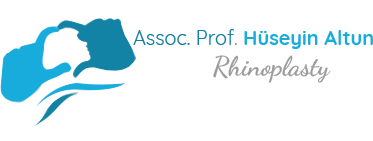Instructions After Rhinoplasty

Instructions
- Have someone drive you home after surgery and help you at home for 1-2 days.
- Get plenty of rest.
- Follow balanced diet.
- Decreased activity may promote constipation, so you may want to add more raw fruit to your diet, and be sure to increase fluid intake.
- Take pain medication as prescribed. Do not take aspirin or any products containing aspirin unless approved by your surgeon.
- Do not drink alcohol when taking pain medications.
- Even when not taking pain medications, no alcohol for 3 weeks as it causes fluid retention.
- If you are taking vitamins with iron, resume these as tolerated.
- Do not smoke, as smoking delays healing and increases the risk of complications.
Activities
- Start walking as soon as possible, this helps to reduce swelling and lowers the chance of blood clots.
- Do not drive until you are no longer taking any pain medications (narcotics).
- Return to work in 1-2 weeks.
- Avoid strenuous activities or any activity that increases your blood pressure for 2-3 weeks.
- Avoid body contact sports, hitting or rubbing your nose, and sunburn for 2 months.
Incision Care
- Avoid exposing scars to sun for at least 12 months.
- Always use a strong sunblock, if sun exposure is unavoidable (SPF 30 or greater).
- Keep steri-strips on.
- Keep incisions clean and inspect daily for signs of infection.
- Stay in bed with your head elevated (except for going to the bathroom) for the first day.
- Cold compresses will reduce swelling.
- Do not shampoo your hair until nose splint is removed, or ask for special instructions.
- Avoid blowing your nose for 1 week.
- Be gentle when washing your face and hair or using cosmetics.
- Do not use facial makeup on external incisions until advised by surgeon.
- Contact lenses can be worn as soon as you feel like it, but glasses cannot be worn until your nose is completely healed (approximately 2 months). After your nose splint is removed, tape your glasses to your forehead or prop them on your cheeks until completely healed.
What To Expect
- You may be up and about in 2 days, but it will be several weeks before you are entirely up to speed.
- Feeling depressed is normal.
- After surgery, particularly during the first 24 hours, your face will feel puffy.
- A small amount of bleeding is common during the first few days.
- A splint is applied immediately after surgery for 7 days. Nasal packs may also be used.
- Minimal postoperative pain.
- Your nose may ache and you may have a dull headache.
- Temporary swelling and bruising around eyes and nose will increase at first and peak after 2 or 3 days. Most swelling and bruising should disappear within 2 weeks. Some subtle swelling (noticeable only to you) will remain for several months.
- Healing is a slow and gradual process.
- Some numbness may be present around the operative areas.
- Black eyes and swollen nose and eyelids for 7-14 days.
- You may experience some discomfort with breathing.
- Swollen nasal tissues may cause nose to seem "stuffed up" for several weeks.
Appearance
- New nose looks better in 2-3 weeks and usually continues to improve for many months.
- Nasal tip drops to its permanent position in 3-6 months.
- Final results may not be apparent for a year or more.
Follow-Up Care
- If you have nasal packing, it will be removed after a few days.
- If nostrils are narrowed, sutures are removed in 3 days. All other sutures either dissolve or are removed within 14 days.
- Frequent follow-up visits should be scheduled.

